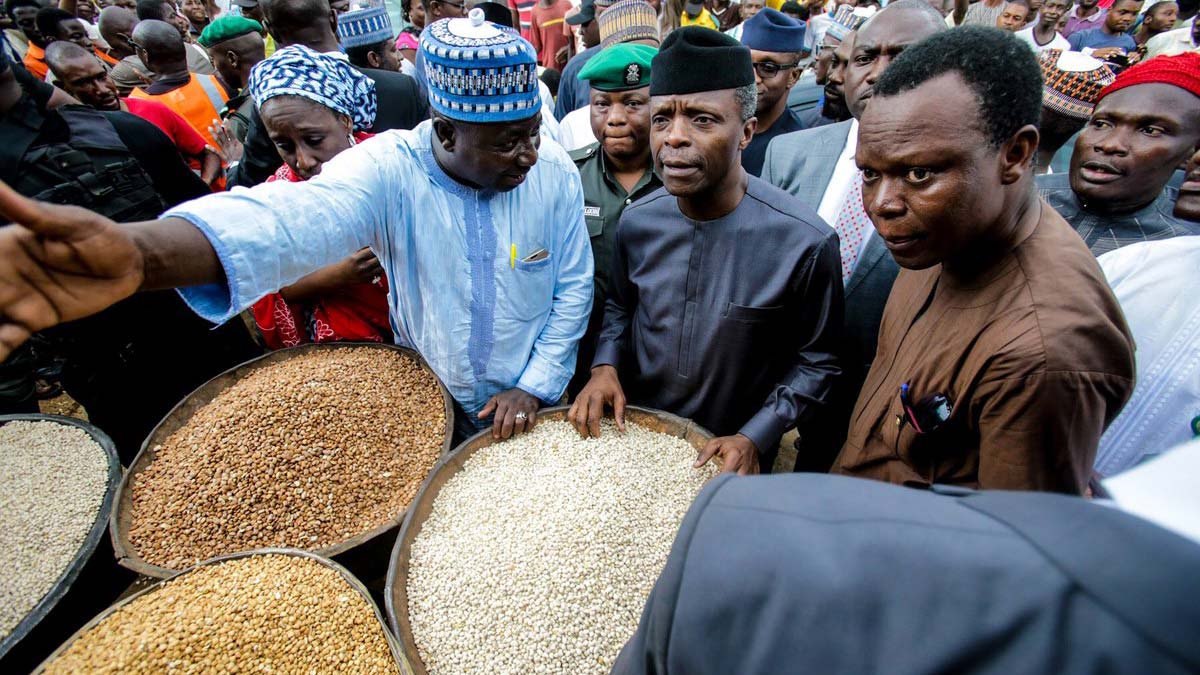The Nigerian economy certainly will break free and soar. Apart from the short-lived oil boom in the 1970s when per capita income peaked in 1977, the economy has been chained down by macroeconomic instability arising from the excess fiscal deficits inherent in the mishandling of public sector oil export proceeds. Refusal to recognize the deficits officially till date does not matter: their poisoned fruits including the poor health of the national currency, the economic lifeblood, are not hidden.
After the discontinuation of the Bretton Woods system of fixed exchange rates in 1971, different countries experimented with various exchange rate fixing methods, but by 1979 the managed float system (MFS) had gained widespread acceptance among the world’s leading economies. However, the Nigerian authorities spurned the MFS and have continued till date to experiment with a multiplicity of methods with some of them being tried and dropped only to be re-adopted and in turn dropped again because of their unfavorable economic impact. The latest is the Importers and Exporters segment exchange rate adopted in April 2017. The common feature of all the ephemeral exchange rate mechanisms is the CBN’s tight hold on Federation Account (FA) oil export proceeds, which have accounted for over 50 per cent of the annual budgets on paper since 1975.
Analytically, to implement over a long time budgets in which realised non-oil revenue amounted to under 50 per cent while the balance was made up of the mere foil (so to speak) of the withheld FA oil proceeds would swathe the economy with the characteristic features of excessive fiscal deficits as attested to by persistent macro economic instability experienced down the years. Given the unwillingness to stop withholding FA dollar allocations, the root cause of the instability, the economy became enfeebled and gaspingly reached for the International Monetary Fund/World Bank (the undertakers of poorly managed economies) 15 years into experimentation with all manner of exchange rate fixing mechanisms which focused economies had long jettisoned. The Bretton Woods institutions grabbed the opportunity to position themselves as the unseen hands behind the monetary and fiscal measures that were geared to exploitatively dissipate the FA dollar accruals being withheld by the apex bank. That was not surprising because the IMF/WB are two-faced and double-dealing institutions: they take economically correct (and at worst ambiguous) positions in the open but suborn behind the scenes implementation of ruinous measures.
For example, during the second coming of Obasanjo, the fiscal/monetary authorities made a singsong of IMF/WB support. But when the WB was confronted that to withhold FA dollar allocations and to simultaneously substitute in their place funds furnished by the CBN not only amounted to harmful proportionate apex bank deficit financing of the budgets of the tiers of government but also contradicted economic best practice, the WB replied that the procedure was improper. (The Opinion page of The Guardian of 23-24/6/2014 contains a reproduction of the exchange). The response echoed the statement by the WB President in Abuja in 2006 that the IMF/WB do not impose fiscal/monetary reforms on countries as they possess the sovereign right to decide such matters. However, the double-dealing IMF/WB had no qualms trampling on Nigeria’s sovereignty in order to exploit the improper practice when they imposed as conditionalities for the country’s external debt exit in 2006 the re-adoption of the ruinous wholesale Dutch auction and release of part of withheld FA dollar accruals to bureaux de change, a measure meant to undermine the economy. The IMF/WB were also instrumental to CBN’s accumulation via the Debt Management Office of a fake national domestic debt (NDD) made up of mopped and sterilized excess liquidity funds. The NDD, which amounted to #12 trillion last March, is largely responsible for raising the debt service to revenue ratio to the unsustainable level of over 40 per cent.
Now, what did the IMF/WB prescribe for the gasping Nigerian economy after 15 years of disastrous experimentation with all sorts of exchange rate mechanisms discarded elsewhere? It was Structural Adjustment Programme. According to Chapter 1 of Adeyemi: Moving Nigeria Forward the Development Planning Approach (Second Edition), SAP’s fiscal/monetary objectives inter alia were to drive non-inflationary growth based on the naira’s true scarcity value under a regime of curtailed fiscal deficits and a restrictive monetary policy. The promise of SAP was ignored by the government, which continued to drown the economy in excessive fiscal deficits that were officially unrecognized. Surely, the National Planning Commission will not controvert that the SAP prognosis was economically correct and became imperative the very moment forex accrued directly to government coffers and also that the naira remains scarce in government’s multiple currency revenue baskets even today. The true scarcity value of the naira required to drive economic efficiency and productivity will only emerge through a single forex market operated under the MFS. Such a forex market necessitates the abandonment of withholding of FA dollar allocations and their simultaneous replacement with apex bank deficit financing.
Pertinently, in August 2007, then CBN governor confessed that both the naira and public sector forex had not been (and are still not being) managed as obtained in successful economies. Although he set a date for the takeoff of an embryonic MFS to enable FA beneficiaries to convert dollar allocations in the secure form to non-inflationary naira revenue, he was browbeaten by the Presidency and developed cold feet. Ten years on and with the withholding of FA dollar allocations still firmly in place, consistently disappointing economic results have led to frequent changes of fresh exchange rate fixing mechanisms. In the past decade despite “CBN’s external reserves” peaking at over $62 billion just as crude oil prices surged to over $100/barrel over a considerable period, the naira has slid from 126/$1 to between 356/$1 and $500/$1; inflation rose to over 16 percent; real sector operators have been priced out of bank credit notwithstanding over 70 trillion of idle banking sector lending potential; unemployment has kept rising with the absolute level now put at over 75 per cent; the FGN domestic debt stock rose from #2 trillion in 2007 to #12 trillion as earlier noted; debt service to revenue ratio at over 40 percent has become unsustainable; all kinds of infrastructure dilapidated; and the GDP has declined for five consecutive quarters by last March. Amazingly, selling off public sector forex for largely unproductive use has become the CBN’s full preoccupation.
Amidst all this, it is not clear if the FA dollar-withholding Buhari administration and the two-faced IMF/WB secretly struck the new game plan playing out in the Federal Ministry of Finance and the Ministry of Budget and National Planning (MBNP). To wit, unable to impose economic reforms on the Buhari administration, the IMF through its 2017 Article IV Consultation on March 30 and again on August 2 expressed fears that under unchanged fiscal/monetary policies, the naira remained overvalued and that the 2017 fiscal year would barely post 0.8 percent growth rate that would not make a dent on the waxing unemployment rate. The IMF therefore strongly recommended unification of the naira exchange rate through a single forex market. But totally unmoved as if dancing to the beat of the secret game plan, the FMF minister dug deeper and further adorned the existing policies by securing approval of the Federal Executive Council in June to refinance naira-denominated Treasury Bills into dollars at 7 per cent interest in preference to domestic offerings that attract between 13 per cent and 18.5 per cent. The minister announced that the administration had decided to borrow more offshore and less at home. The $3 billion to be realized from refinancing the TBs and future external borrowings will be added to “CBN’s external reserves” for dissipation in the segmented forex market windows. Presumably, should the administration (present or future) fail to earn enough forex to service and redeem the TBs and other external borrowings, the association of dollar lenders (as with the previous external debt trap) would hire the IMF/WB to garnishee government, impound its assets wherever they may be found on the globe and formally re-colonise Nigeria. Does FEC approve? The FMF proposal is not beneficial to the generality of Nigerians. The NASS should, therefore, dismiss this negative solution to the country’s economic problems.
Similarly, on August 9, the FEC approved 2018-2020 Medium Term Expenditure Framework and Fiscal Strategy Paper. With the exception of reducing the projected economic growth rate in 2018 to 3.5 per cent, the MBNP left the Economic Recovery and Growth Plan (ERGP) untouched. Given the gap between the planned ERGP indices and segmented market naira exchange rates as well the levels of inflation and lending rates eight months into the 2017 fiscal year, the MBNP minister does not require a seer to tell him that the ERGP under existing policies cannot but fail. Does FEC disagree?
The FEC should note that the withholding of FA dollar accruals and experimentation with numerous exchange rate fixing methods with the exception of the MFS in the last 46 years have produced laggardly and disastrous economic results. The FEC should, therefore, demonstrate its love for Nigeria by adopting completely painless fiscal and monetary reforms without further delay. The required step is to direct the CBN to take immediate action and put in place a single forex market using the managed float system in order to quickly establish the true scarcity naira exchange rate as the IMF/WB intended in 1986. But the Bretton Woods institutions did not propose anything extraordinary because, but for interference by the federal executive arm, given the country’s multiple currency revenue profile, faithful implementation of the provisions of the CBN Act 2007 (or even any previous version of the Act down to the 1958 Ordinance) would deliver the true scarcity naira exchange rate.
The expected benefits of the recommended reforms include inflation rapidly sinking to 0-3 per cent, lending rates crashing to 5-7 per cent as in competitive economies, the exchange rate staying stable, phenomenal increase in bank credit to the economy, reinvigorated productive economic activity and achieving double digit GDP growth rate. That is the basis for the economy to soar to a very great height
Source: The Guardian









